2nd Cycle of UNESCO World Heritage & Sustainable Tourism - Chinese Pilot Study(2021-2025)National Training Course was successfully held
Release date :2021-06-07
Views: 4092
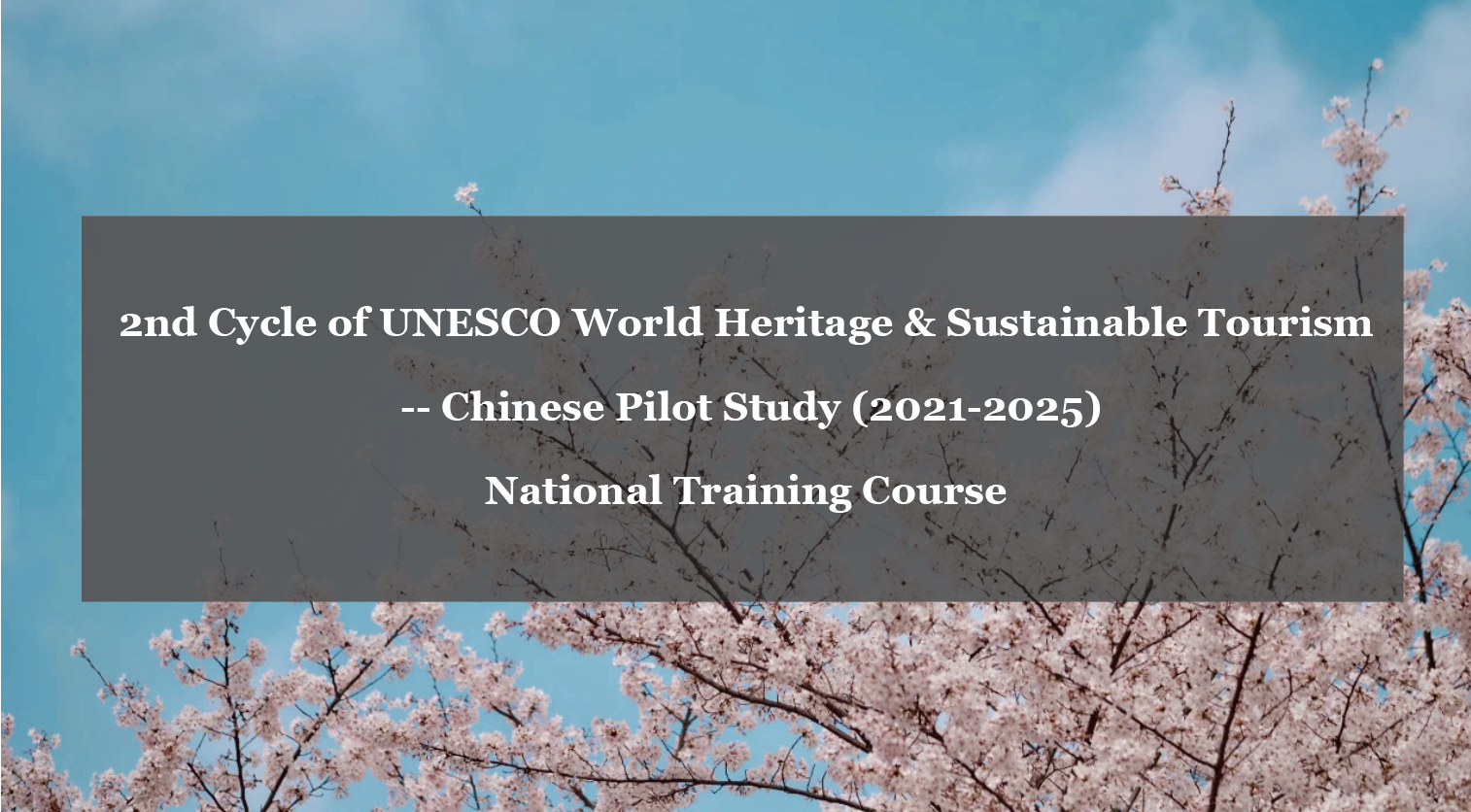
From June 7 to 11, 2021, WHITRAP Shanghai Center held the second UNESCO "World Heritage and Sustainable Tourism" (WH+ST) training course. This training brings together 16 experts and scholars home and abroad in the fields of heritage protection and cultural tourism to explain in details the background of WH+ST, the recognition of outstanding universal value (OUV), management planning, sustainable tourism and community collaboration. 30 trainees participated in this training course, among whom female accounted for 63%. They are from different departments including heritage site management agencies, museums, universities and tourism companies. There are 16 trainees from 12 world heritage sites in China, including Yancheng, Wulingyuan, Jiuzhaigou, Hailongtun, Lijiang Ancient Town, Liangzhu Ancient City, Qin Shihuang Mausoleum, Qing Dong Tomb, Shanhaiguan, Taishan Mountain, Lushan Mountain, and Chengjiang Fossil Group, as well as the managers who work on the front lines of Langzhong Ancient City and Nanjing Ancient City Wall, 2 sites on the tentative list.
This training course aims to help trainees understand new challenges confronted by world heritage sites under the pressure of COVID-19, clarify basic world heritage management requirements and work mechanism, learn sustainable tourism methods centered on the recognition, protection, display, dissemination and experience of OUVs, , and discuss the suitable protection and development strategies for world heritage sites based on the reality in China. The training course contains 4 modules: “Recognition of World Heritage’s Outstanding Universal Value ", "Planning and Management of World Heritage Site", "World Heritage OUV and its Tourism Products" and "Community Collaboration at World Heritage Site". Based on the authenticity and integrity of OUVs, the training course re-examines existing protection and management problems of heritage sites, explores effective solutions to the interpretation of world heritage site values, quality monitoring and management in world heritage site, tourism experience innovation and cultural tourism integration, heritage digital technology transformation and community collaborative development. After training course, group discussions and site visits to historical buildings in Shanghai were arranged to help trainees consolidate theoretical knowledge.
This training includes theoretical and practical lectures, so that the trainees can have comprehensive understanding of world heritage protection and management, which guides them to review the fragility of heritage in face of tourism development and think about corresponding countermeasures. The lectures also build a heritage management platform for cooperation and exchange among the participants. Through this training course, trainees can have a thorough understanding of the definition of OUVs and its attributes, think about the effective ways to publicize OUVs from the perspectives of all stakeholders. Focusing on the protection and management of heritage sites with a combination with their own work experience, the participants discussed with the experts on community issues, and learnt about heritage tourism products and digital technology applications in heritage protection. The training receives satisfactory response from the trainees, who have expressed that they will implement the concepts of sustainable tourism on world heritage in their future practice.
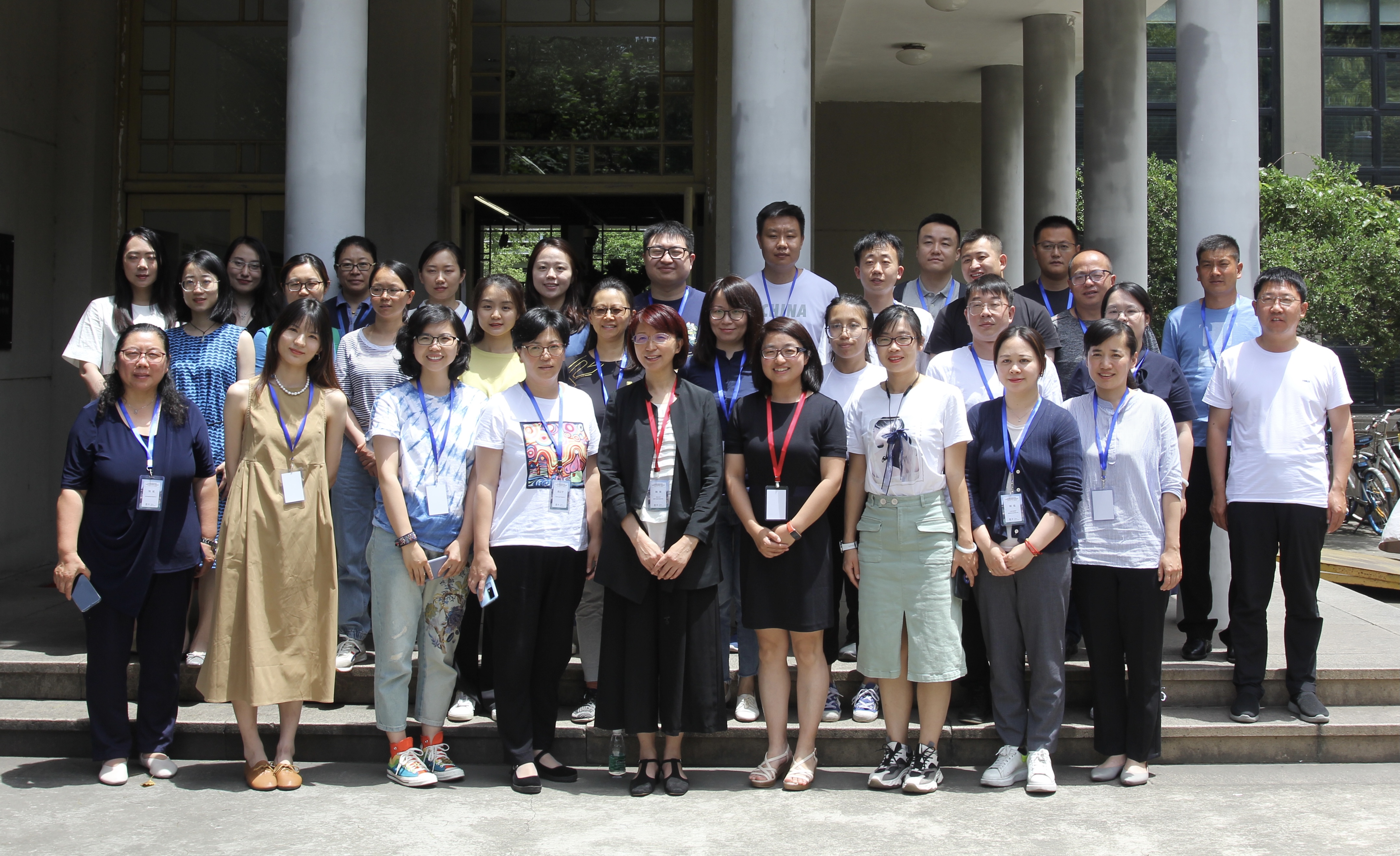
The opening ceremony of the second UNESCO National Training Course on World Heritage and Sustainable Tourism on June 7, 2021 ©️ WHITRAP 2021
Opening Ceremony
The opening ceremony was held online and offline. It was hosted by Professor Han Feng from the Landscape Department of Tongji University. Mr. Shahbaz Khan, Director of the UNESCO Beijing Office, Mr. Jing Feng, Chief of Asia and the Pacific Unit of the UNESCO World Heritage Centre, Professor Zhou Jian, Secretary-General of WHITRAP delivered welcome remarks, respectively summarising the successful completion of the first phase of the pilot project (2015-2020), and expressing their supports and expectations for the second work phase.
Prof. Shahbaz Khan pointed out that China’s tourism market had huge development potential and played a vital role in the development of heritage sites. UNESCO actively promoted the cooperation between the Headquarters, Beijing office and WHITRAP, took the opportunities of the launchingof China's "14th Five-Year Plan" and worked together to promote the protection and sustainable development of world heritage sites.
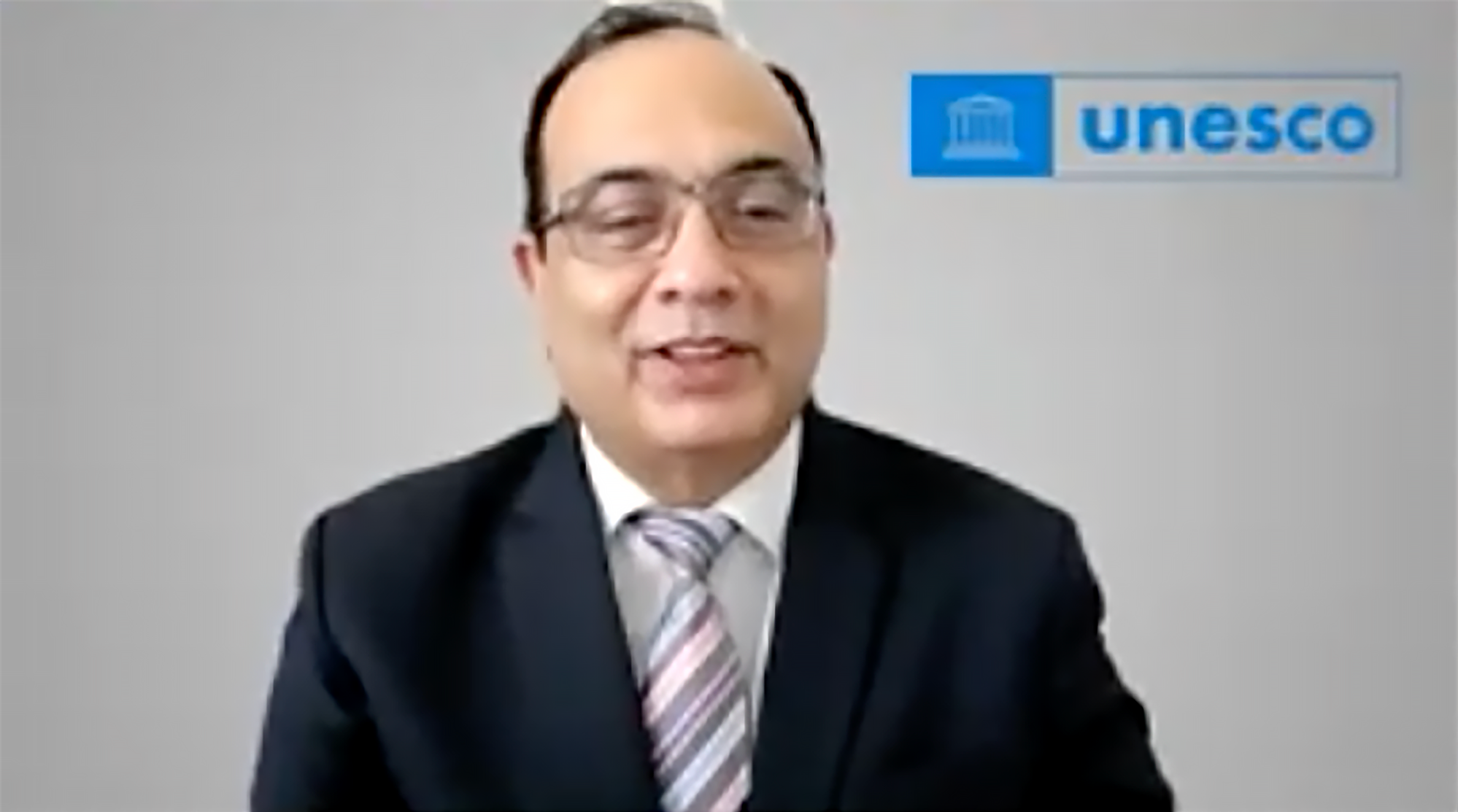
Opening address by Prof. Shahbaz Khan, June 7, 2021 ©️WHITRAP 2021
Director Jing Feng pointed out that tourism was a double-edged sword, which was not only the main driving force for the development of heritage sites, but also caused environmental and social problems. The World Heritage Site Sustainable Tourism pilot project had the dual goals to implement the protection of world heritage outstanding universal values and to guide the sustainable development of heritage sites. The Chinese pilot project made significance contributions to the global heritage conservation experience and development strategies.

Opening address by Mr. Jing Feng, June 7, 2021 ©️WHITRAP 2021
Professor Zhou Jian introduced the implementation background of the World Heritage Sustainable Tourism Project and the outcomes of the first phase of the pilot project in China, and pointed out that sustainable tourism contributed to the alleviation of the pressures and challenges caused by COVID-19 in heritage sites, and promoted emerging businesses and cultural tourism industry development. China should fulfill its responsibility as a major country in heritage protection, and provide necessary experience sharing and technical support for the protection and development of heritage sites in the Asia-Pacific region and the world.
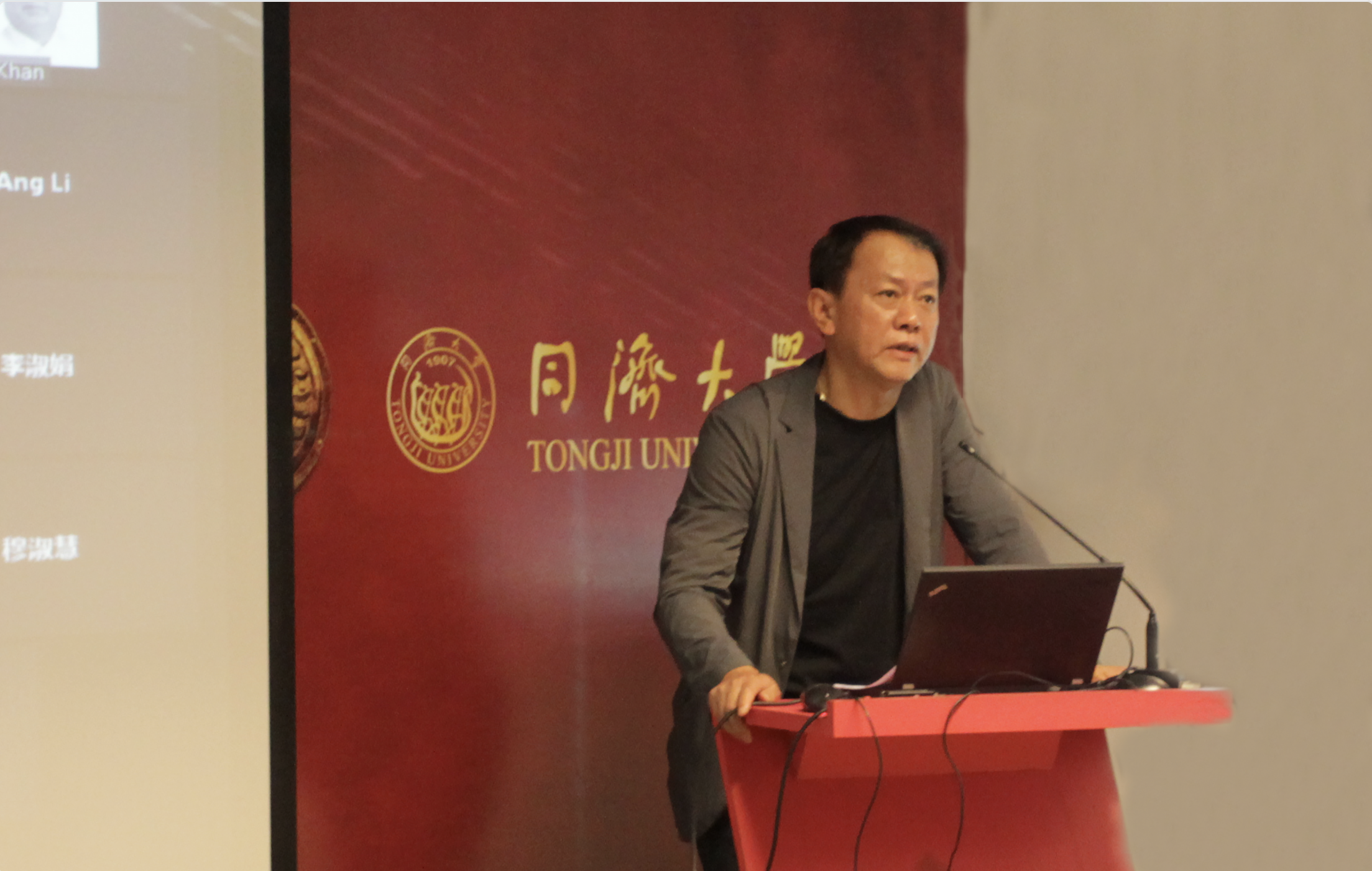
Opening address by Prof. Zhou Jian, June 7, 2021 ©️WHITRAP 2021
Course modules
WH+ST Programme background introduction
Mr. Peter Debrine, former senior project officer of the UNESCO World Heritage Center, introduced the development background of world heritage and sustainable tourism project. Under the influence of the COVID-19, UNESCO was actively thinking about how to enhance the resilience of heritage communities, help member states recover economic growth through sustained development, and guide the economic recovery of communities around the heritage site and the protection of living heritage. He emphasized it is essential to adopt a community-centric development model, and build suitable community development structure and heritage management network. He also introduced the practice cases of UNESCO in Africa and Southeast Asia, and provided the "Toolkit" (UNESCO World Heritage Sustainable Tourism Toolkit) to help trainees better understand the sustainable tourism in heritage sites which contributed to strengthen the management of heritage sites and capacity of personnel and formulate effective planning strategies.
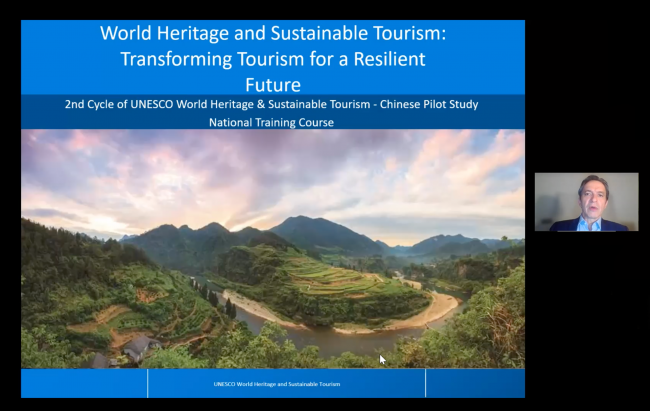
Mr. Peter Debrine introduced the background of "WH+ST" Programme ©️WHITRAP 2021
Professor Han Feng from the Landscape Department of Tongji University introduced the development background and implementation of the first phase pilot project in China. She mentioned that the project selected the two sites of Wulingyuan Natural Heritage Site and the Hailongtun Cultural Heritage Site, which were very different from each other on its territorial scale, popularity and tourist capacity. Through questionnaire feedback from different stakeholders, meeting interviews and field research, the project conducted detailed analysis on four aspects of the awareness of heritage site OUVs, conservation management, tourism operation, and community participation. Professor Han pointed out that we should see the fragility of tourism, deeply understand the concepts of OUVs and sustainable development goals, and use sustainable tourism as a powerful tool to promote OUV protection and display. She proposed the overall slogan as "overhaul the system, bring forth innovations, embrace openness and sharing, achieve sustained development".
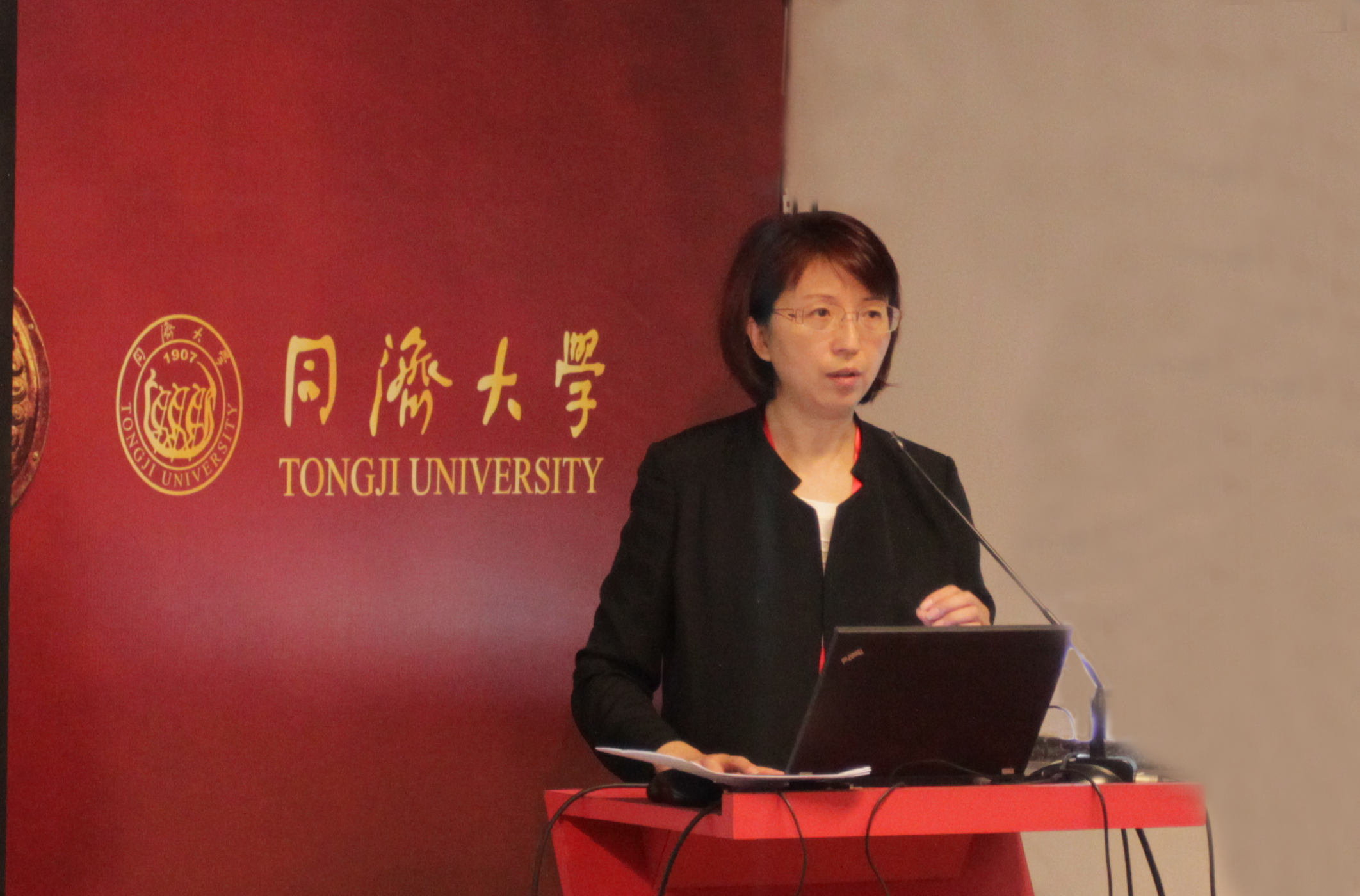
Prof. Han Feng introduced the background of China's Pilot Programme ©️WHITRAP 2021
Ms. Li Hong, the programme specialist of WHITRAP Shanghai, gave a detailed introduction to the institutional functions, priority projects, training courses and trainees.
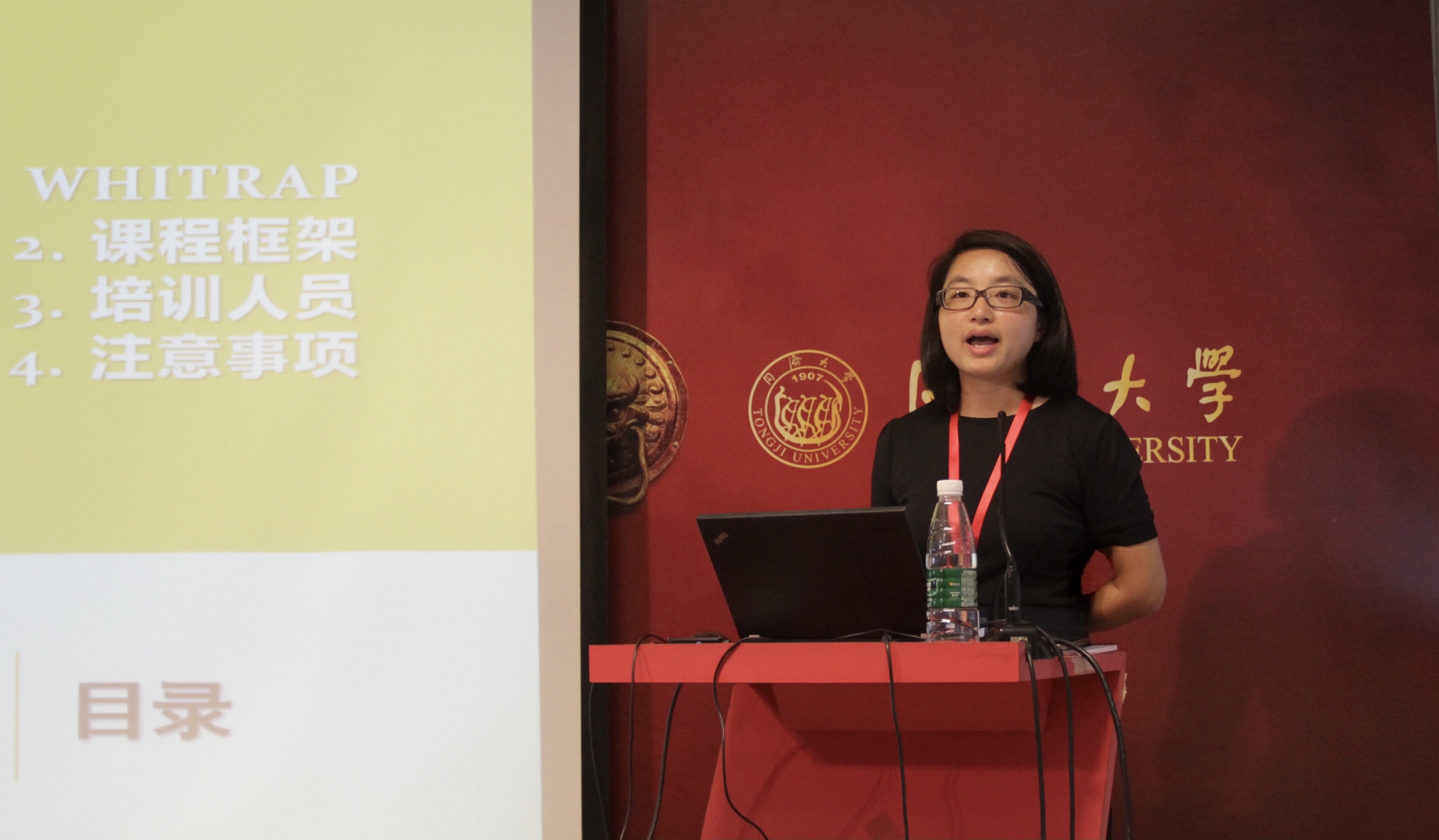
MS. Li Hong explained the training content ©️WHITRAP 2021
Module 1 Recognition of World Heritage Outstanding Universal Value
This module introduced the meaning of OUV and its integrity and authenticity, took it as the basis of heritage value protection, interpretation, dissemination and experience, and emphasized the importance of heritage community participation in sustainable tourism.
Professor Han Feng from the Landscape Department of Tongji University, pointed out that sustainable tourism was an important way to spread the OUVs of heritage sites. The current lack of awareness and protection of OUVs had caused a credibility crisis of the World Heritage. She clarified the World Heritage nomination standards and definitions of authenticity and integrity of the OUVs, emphasized to fully preserve the heritage attributes and its characters, and introduced the cases of Lushan Mountain, Lijiang Ancient Town, Jiangnan Ancient Town, Wudang Mountain and Jiuzhaigou. Based on these cases she analyzed the existing problems of heritage sites, including the different recognition of OUVs and its attributes, insufficient interpretations, and unqualified protection of the authenticity and integrity of OUVs. Professor Han pointed out that the heritage values of Chinese sites consisted of OUVs and local values. The community should be guided to further participate in sustainable tourism, in order to enhance residents’ sense of cultural identity and social economic benefits, actively promote high-quality heritage sites sustainable tourism with the goal of "shared value and shared responsibility ".
Module 2 Planning and Management of World Heritage Site
This module introduced the principles and approaches of heritage tourism protection and management, combined with practical cases such as Wulingyuan and Jiuzhaigou, and elaborated from three aspects: heritage planning and management, heritage tourism monitoring and post-disaster reconstruction management.
Professor Han Feng from the Landscape Department of Tongji University, proposed 4 principles of heritage tourism management as "inclusive decision-making", "synergetic social, economic and environmental development ", " common principles of tourism and heritage" and "sustainable tourism development", and introduced OUV interpretation and consultation, regular display of heritage values, heritage facilities construction and recreation opportunities, tourism risks, heritage tourism products and capacity building, etc. She emphasized that heritage site planning is the major means to implement heritage site protection and management based on China’s national conditions, and analyzed the existing problems of “overlapping boundaries”, “multiple planning in parallel” and “insufficient service facilities” in the Wulingyuan as examples, and proposed solutions such as organizing local capacity training and sustainable tourism promotion, building a multi-level heritage value system, taking planning evaluation and revision of heritage sites in the context of the “integration of multiple regulations” policy, strengthening heritage conservation and community development coordination and promoting the achievement of Wulingyuan Project to the world, etc.
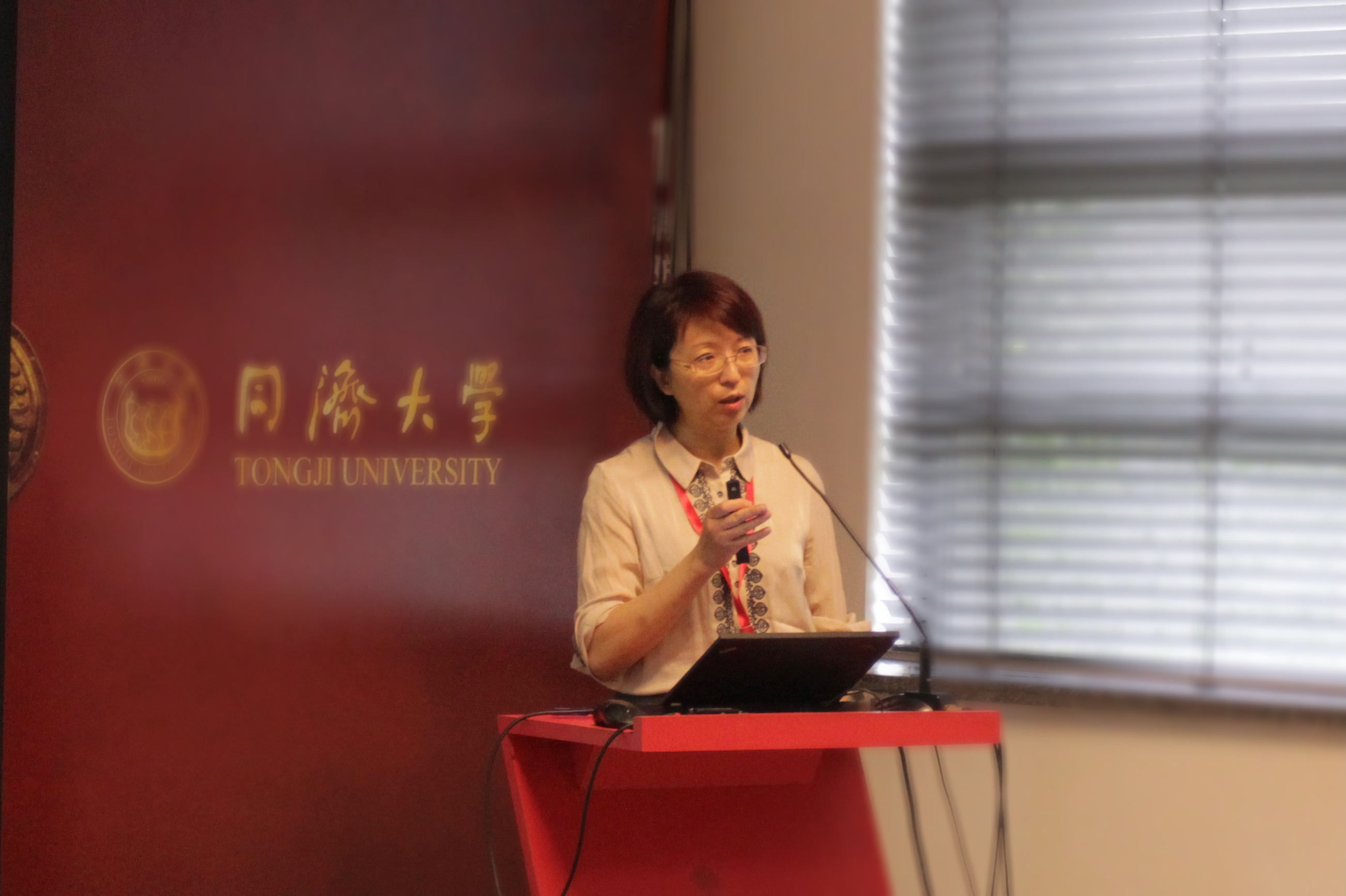
Prof. Han Feng illustrated the World Heritage Conservation and Management Planning ©️WHITRAP 2021
Professor Zhang Chaozhi from the School of Tourism Management, Sun Yat-sen University, pointed out that heritage site monitoring can avoid the negative impact of informal sightseeing activities, irregular tourism management, development constructions and operations on the heritage site, and also have great significance to the implementation of heritage site protection. He took Mogao Grottoes, Jiayuguan and Taishan heritage sites as examples to demonstrate the daily monitoring activities and methods for the heritage sites, as well as the selection of monitoring indicators and diversified data acquisition methods, and gave the suggestions about completion of regular inspection reports based on the monitoring results, and provided application strategies such as assisting policy formulation and optimizing operating models, etc.
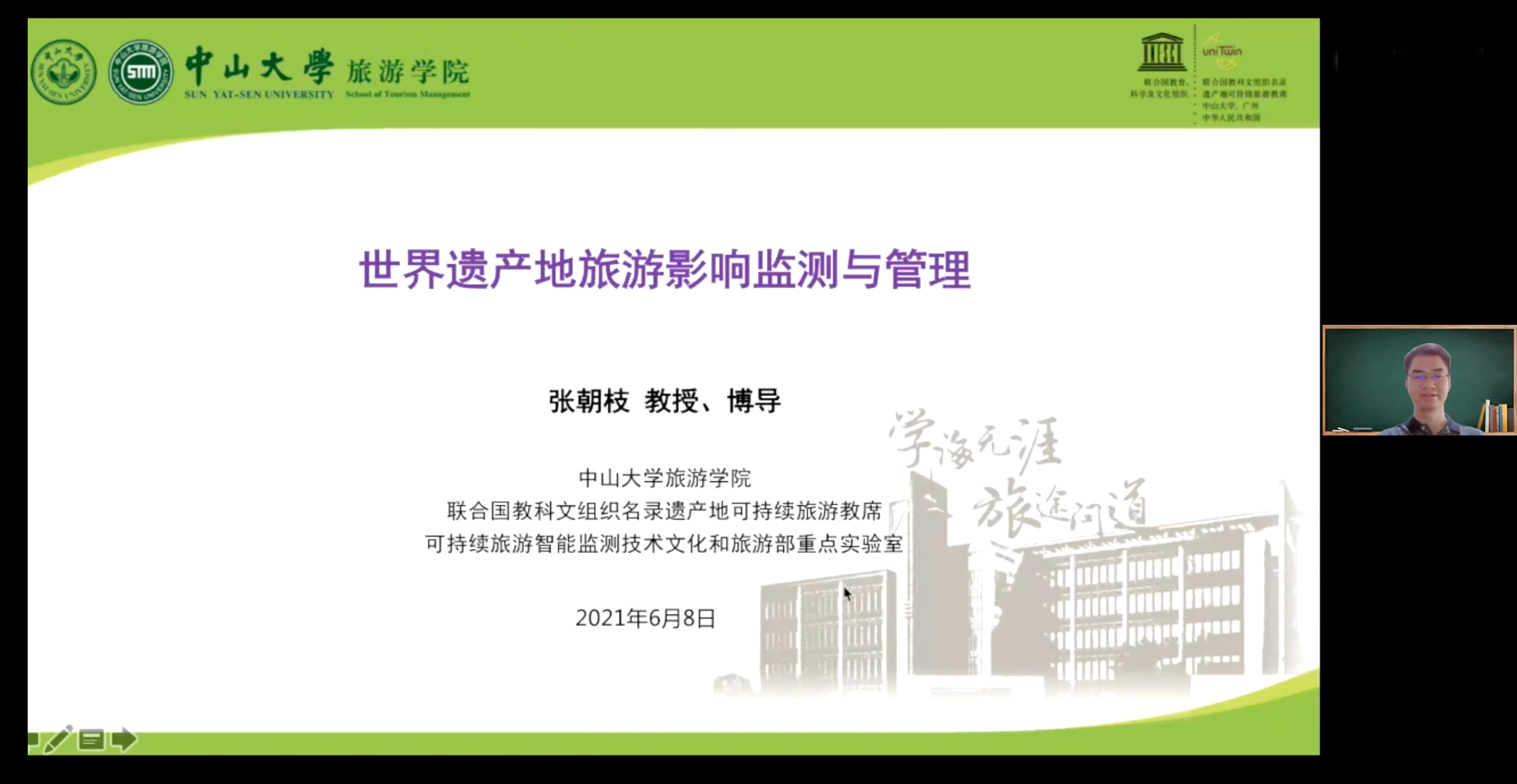
Prof. Zhang Chaozhi introduced "Impact Monitoring and Management of World Heritage Site" ©️Wang Lan/ WHITRAP 2021
Mr. Du Jie, Director of the Scientific Research Office of Jiuzhaigou Valley Administration Bureau, took Jiuzhaigou World Heritage Site as an example and shared the experience in reconstruction after natural disasters like earthquakes and epidemics. He introduced the OUVs of Jiuzhaigou World Heritage, its heritage management mechanism and development process, focusing on post-disaster reconstruction measures of Jiuzhaigou from these aspects: vegetation restoration, mountain disaster management and ecosystem monitoring. He showed specifically strategies such as implementation of heritage project accountability system to improve reconstruction efficiency, introducing multi-disciplinary cooperation and taking natural-approaching restoration, soliciting opinions from stakeholders and guiding management behaviors, improving and updating safety facilities, building big data for risk assessment and tourism monitoring systems, enhancing image branding and promoting publicity and education, which made an excellent demonstration of heritage site post-disaster reconstruction and protection management.
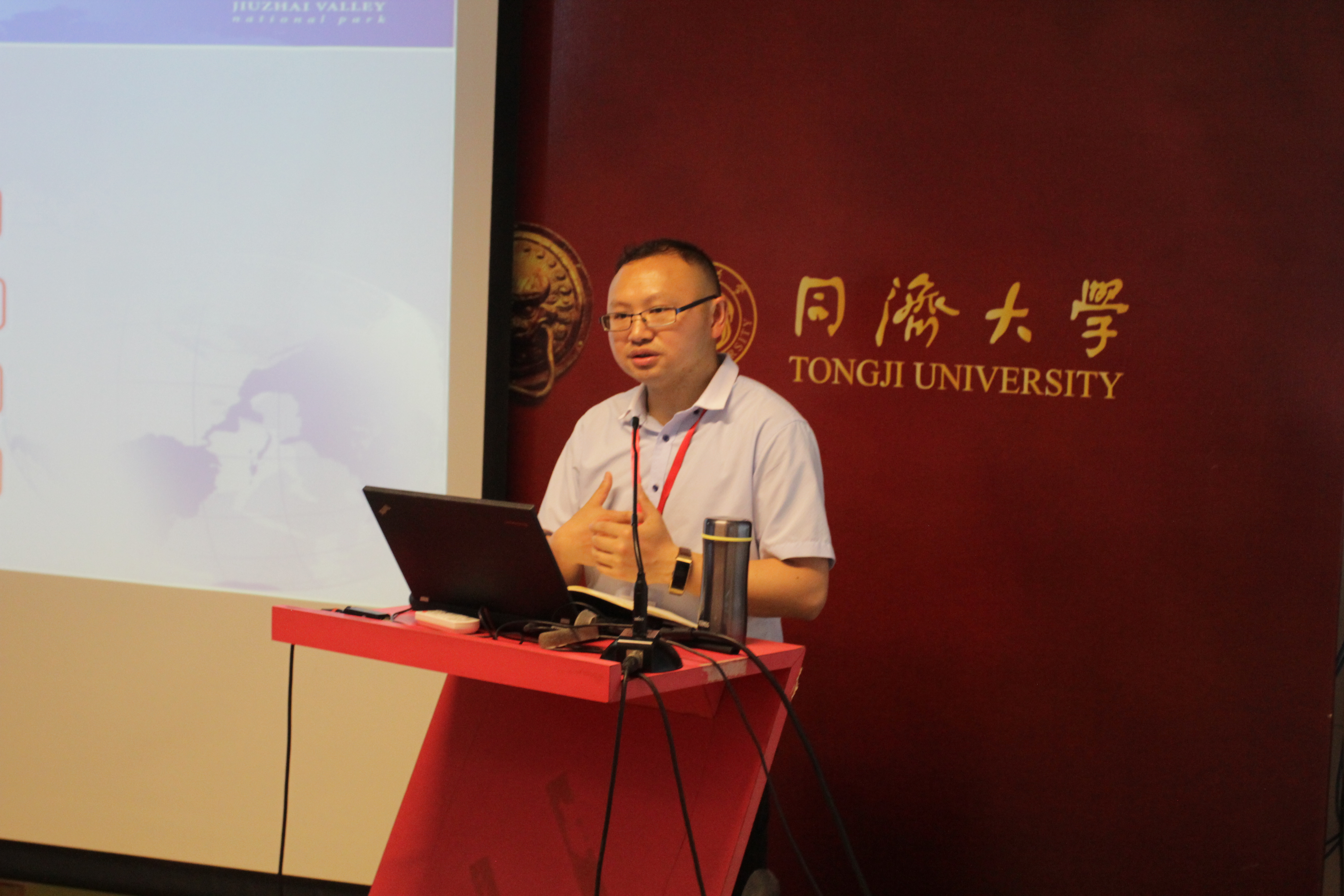
Mr. Du Jie lectured on the "Case study: Jiuzhaigou Valley Scenic and Historic Interest Area" ©️Wang Lan/ WHITRAP 2021
Module 3 World Heritage OUV and its Tourism Products
This module introduced the marketing strategies of heritage tourism and the advantages and potentials of culture and tourism integration, combined digital technology innovations to explore new ways of heritage value documentation , interpretation, dissemination and archiving.
Professor Xiao Qianhui, former Director of the Department of Human Resources and Education of the National Tourism Administration, pointed out that heritage tourism was different from commercial tourism in narrow sense, and more attention should be paid on the protection of OUVs, tourism quality, value communication, and tourist experience and satisfaction. Starting from the dominant players of the tourism market, he analyzed the characteristics of dominant consumers as young and middle-aged populations, and proposed the principles like "Focus on people, C-end, and related people" and " indefinite experience is, no experience without innovation ". Combined with cases such as Eslite Bookstore, Irish Private Garden, Japanese Koshihikari Rice and Shapotou Sandboarding, he demonstrated strategies such as in-depth exploration of the cultural background, the innovative experience models, new media marketing and other ways, which provided a wealth of practical experience for heritage site tourism experience planning.
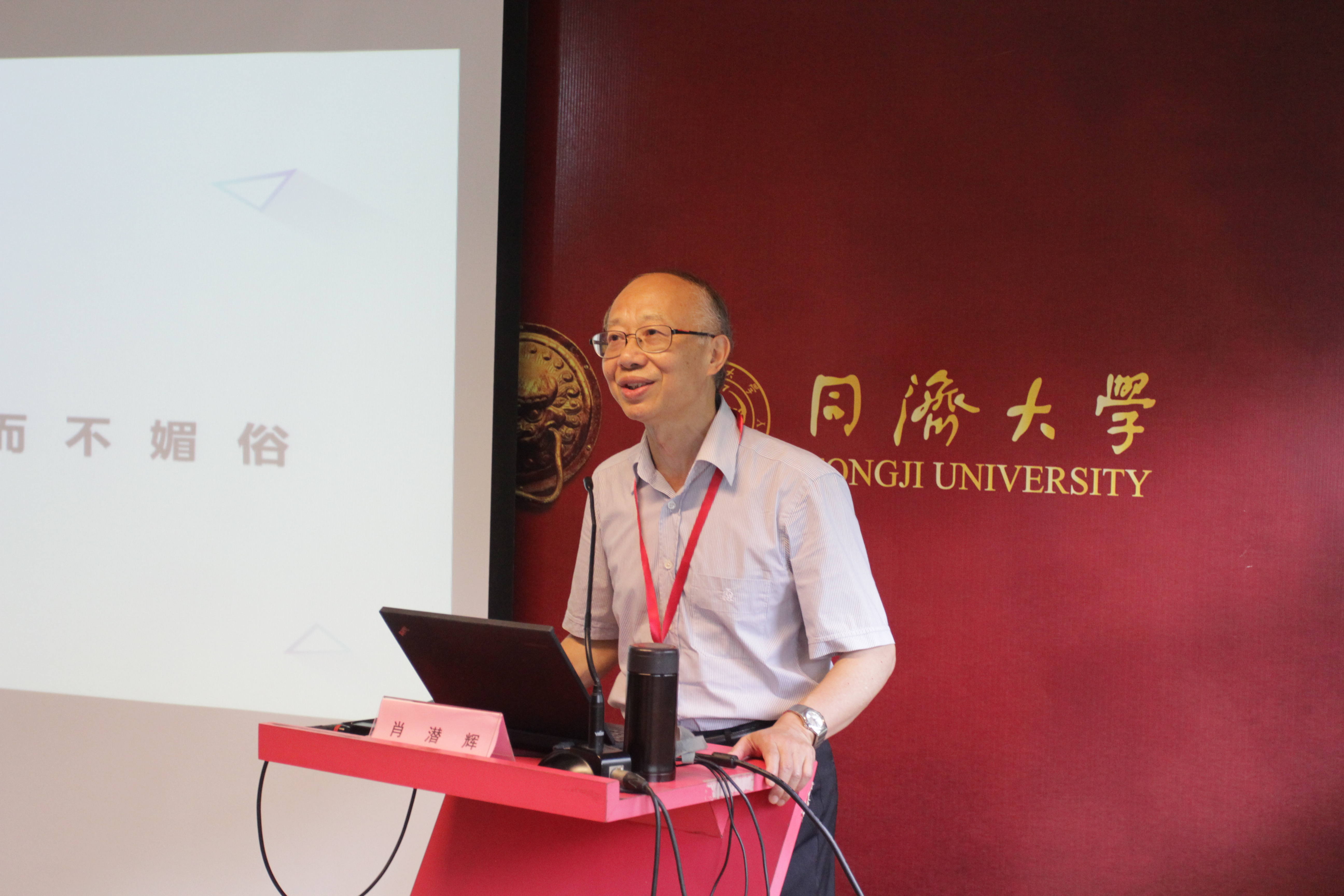
Prof. Xiao Qianhui lectured on "Marketing Strategy of World Heritage Tourism" ©️Wang Lan/ WHITRAP 2021
Assistant Professor Yang Chen from the Landscape Department Tongji University, introduced many international cases based on the frontiers of digital heritage research, which provided new visions and strategies for virtual tourism in heritage sites. Virtual tourism can present a diversified experience for the audience, and have many advantages such as enhancing the interpretation of heritage values, breaking the time and space constraints of heritage information dissemination, expanding the tourism industry chain and reducing management pressure. He used short video materials including the digital display of the Dunhuang Grottoes, the light projection of the cathedral and the interactive design of the Van Gogh exhibition to show the diverse manifestations of virtual tourism and its great potential in heritage experience. He demonstrated the importance of digital technology for cultural relic protection and heritage documentation with the Baojiatun Settlement, India Queen’s Well Case, Yangzhou Gardens, Wulingyuan Cultural Lens Project, and the Ballarat City History Website.
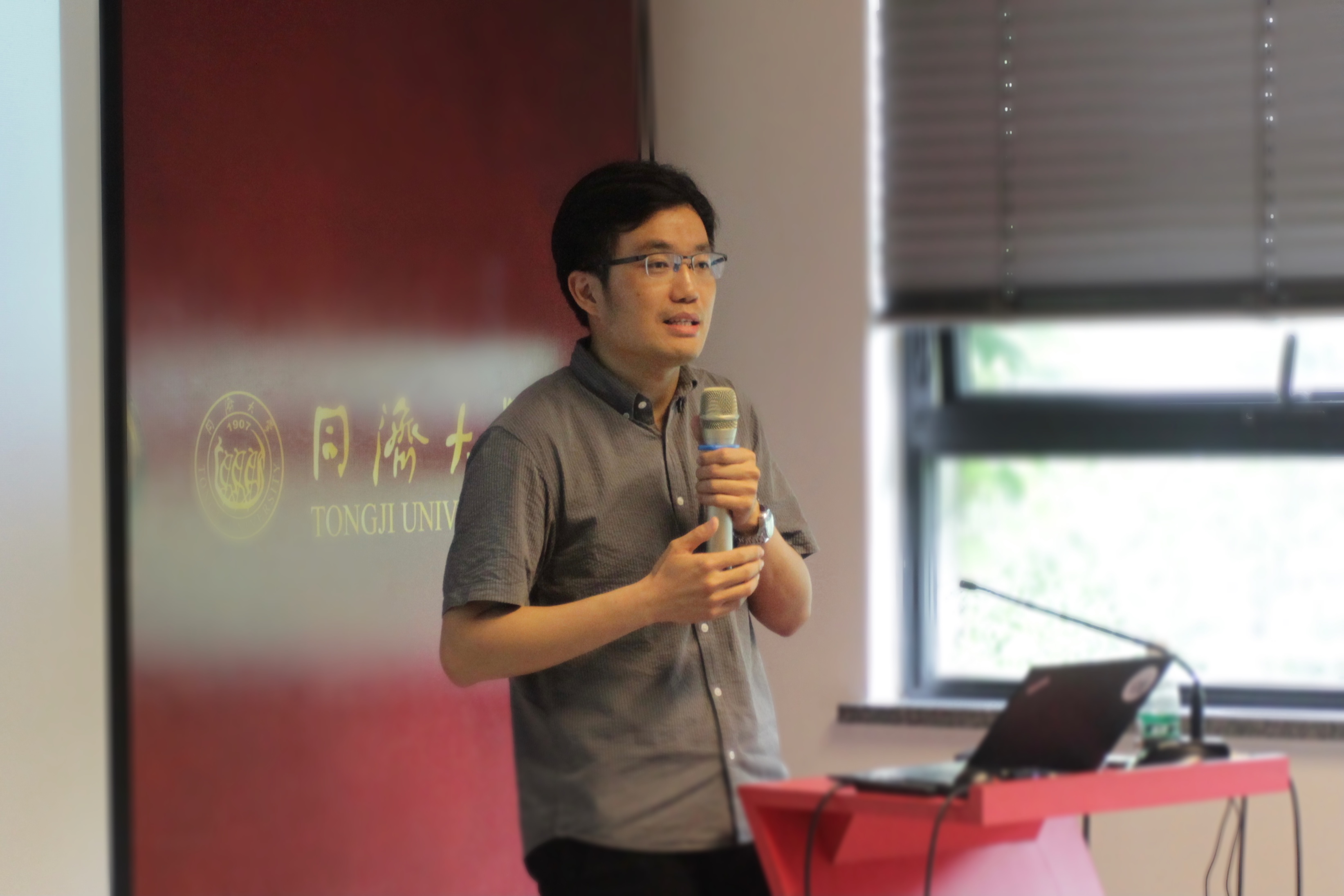
Mr. Yang Chen lectured "Digital tourism" ©️Wang Lan/ WHITRAP 2021
Mr. Zhao Zhenlin, senior market manager of the Planning and Development Department of Spring Airlines, introduced the international background of culture and tourism integration and the trend of China's cultural and tourism industry, proposed the integration path of "promoting tourism through culture, commending culture with tourism", and shared typical examples such asthe transformation of Gaudi’s Architecture in Barcelona, the renovation of the British Heritage Lottery Foundation, the renovation of the Ruhr Area in Germany, the Shanghai Folk Culture Center, the Sichuan Zigong Lantern Festival, the Wuzhen Theater Festival and other typical domestic and foreign cases. He summarized the cultural and tourism integration strategies such as "model confidence", "product improvement", "consumption upgrading" and "cultural identity", etc.
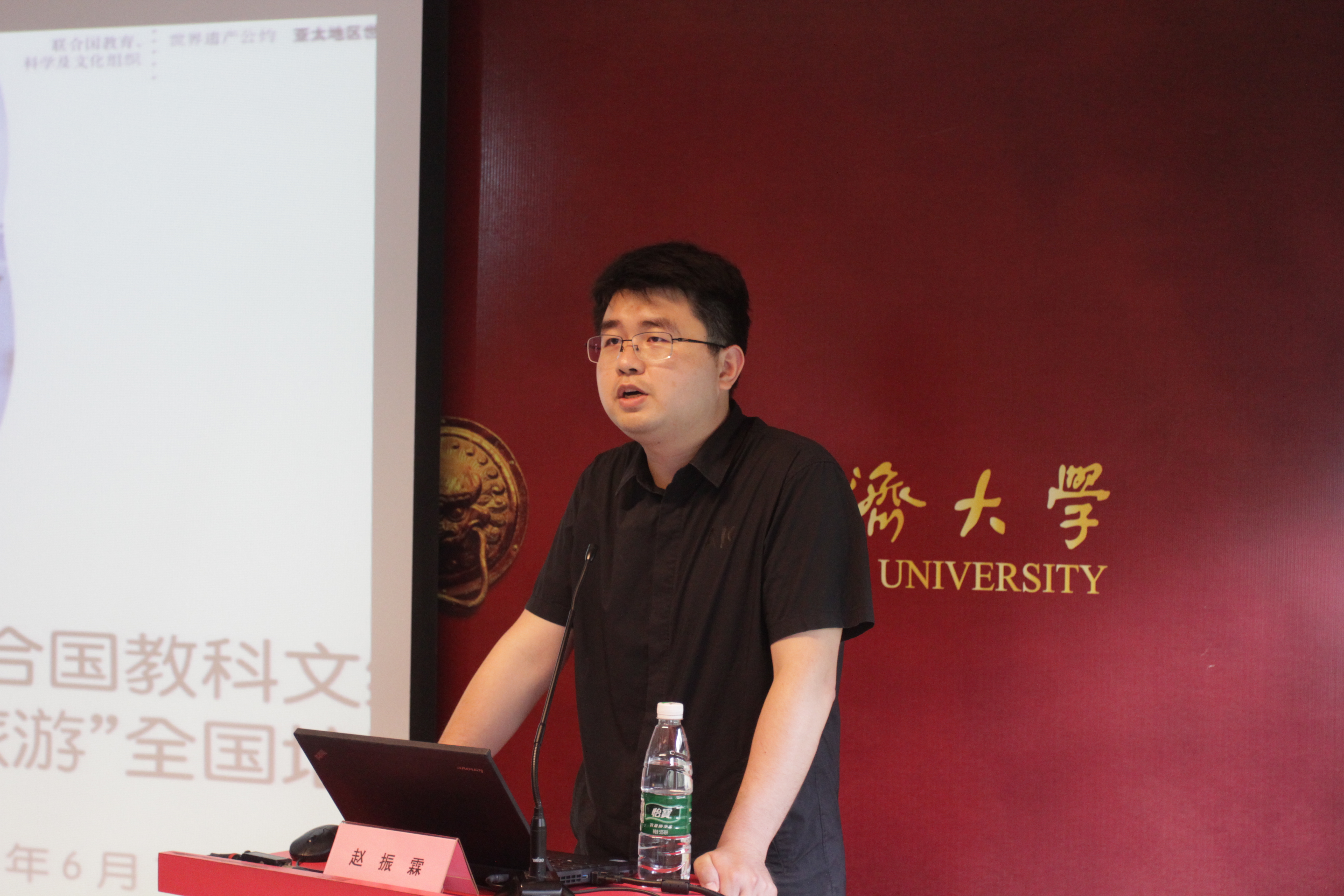
Mr. Zhao Zhenlin introduced "Integration of cultural and tourism" ©️Wang Lan/ WHITRAP 2021
Module 4 Community Collaboration at World Heritage Site
This module focused on the synergy between soci-economic development and heritage community and the protection of heritage values, introduced the ways and strategies of community empowerment and stakeholder linkage in the heritage community with practical cases.
Ms. Himalchuli GURUNG, Programme Specialist for Culture of UNESCO Beijing Office, introduced the main features of the three documents and their synergy: Convention for the Protection of World Cultural and Natural Heritage, Convention for the Protection of Intangible Cultural Heritage, Convention for the Protection and Promotion of Cultural Diversity. She pointed out that the conservation and management of heritage site communities should focus on capacity building, public awareness, efficient management and sustainable livelihoods. Combined with practical cases such as Shilin embroidery, Chishui bamboo weaving, Ya'an beekeeping and Songtao embroidery, she proposed the effective strategies such as organizing local women to participate in technical training and guiding employment, building product sale platform and industrial chain, and organizing children to participate in science and nature education. Ms. GURUNG also mentioned that the core of community collaboration was empowerment and linkage. The main role of UNESCO was about skills training, networking platform establishment and method promotion, while the participation and guidance of local governments served as an important foundation for maintaining the vitality of communities. The development of embedded communities should be accorded to the "14th Five-Year Plan". She also provided effective suggestions in term of heritage site protection, museum operations, tourism sales, cultural and creative industry development, include enhancing local residents’ understanding of heritage values and guiding them to make profits out of it, organising regular festivals to make the museum’s vibrant and diverse publicity, cooperating with residents to create featured tourism products, and promoting employment through intangible cultural heritage.
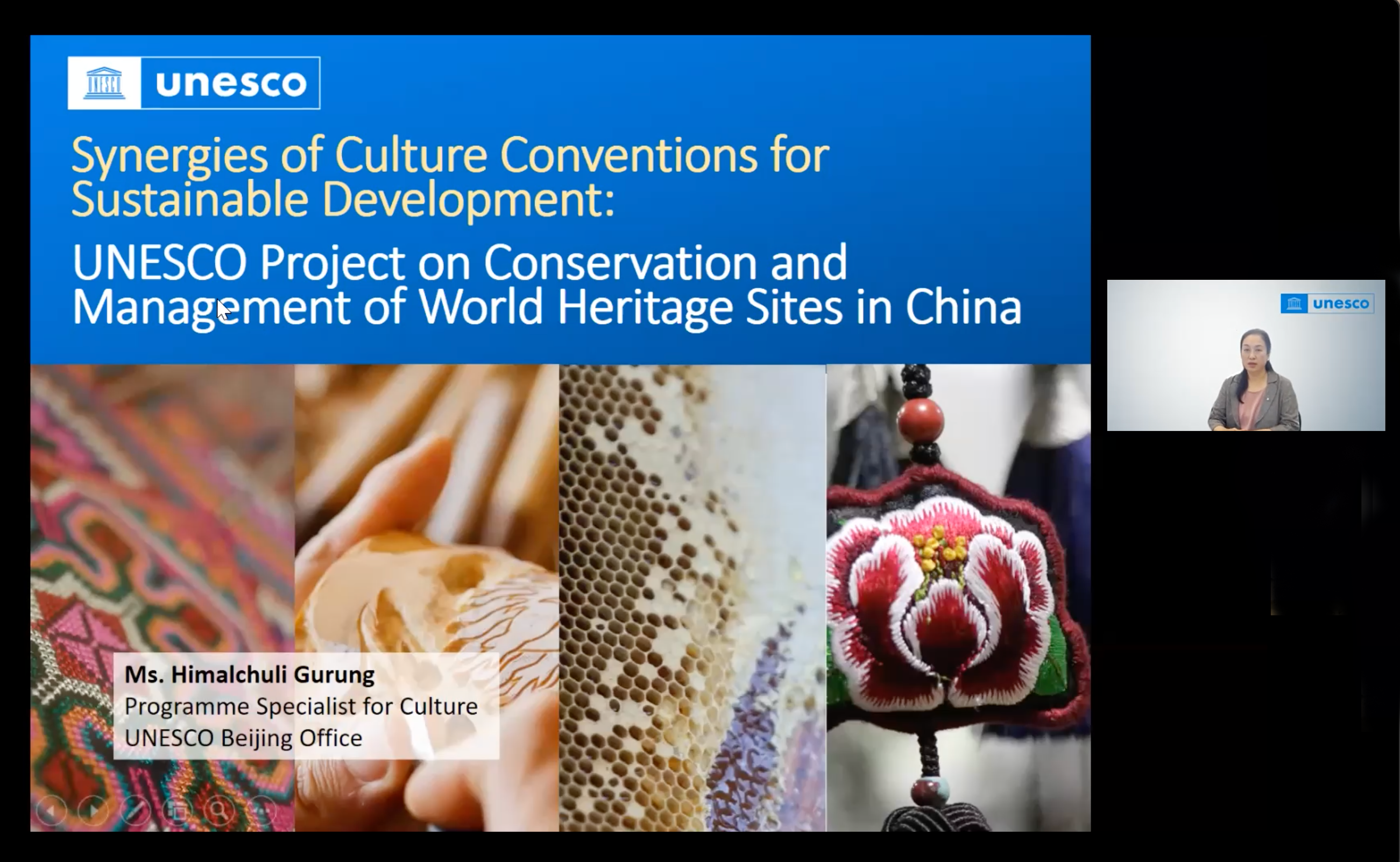
Ms. Himalchuli Gurng introduced "Synergy of Cultural Conventions for Sustainable Development:
UNESCO project on Conservation and Management of World Heritage Sites in China" ©️Wang Lan/ WHITRAP 2021
Mr. Yan Haiming, Director of the Secretariat of ICOMOS China, introduced the relationship between the community and tourism in the heritage site based on the perspective of the third cycle of periodic reporting for World Heritage. He took the Uluru-Kata Tjuta National Park, Australia and Starr Bridge as an example, proposed that “community witnesses, carries and builds values”, and emphasized that the demands of local residents should be fully considered in the process of protection and development of heritage sites. Subsequently, he analysed the impacts of different factors on the heritage site combined with the content of the periodic reporting, and pointed out that tourism management should meet the capacity and protection and management regulations of heritage sites, in order to reduce the negative impacts of building construction on World Heritage OUVs, and enhance the community’s capacity building and social relations in the heritage site, which can improve residents’ sense of identity and benefit through community’s traditional knowledge and behaviours.
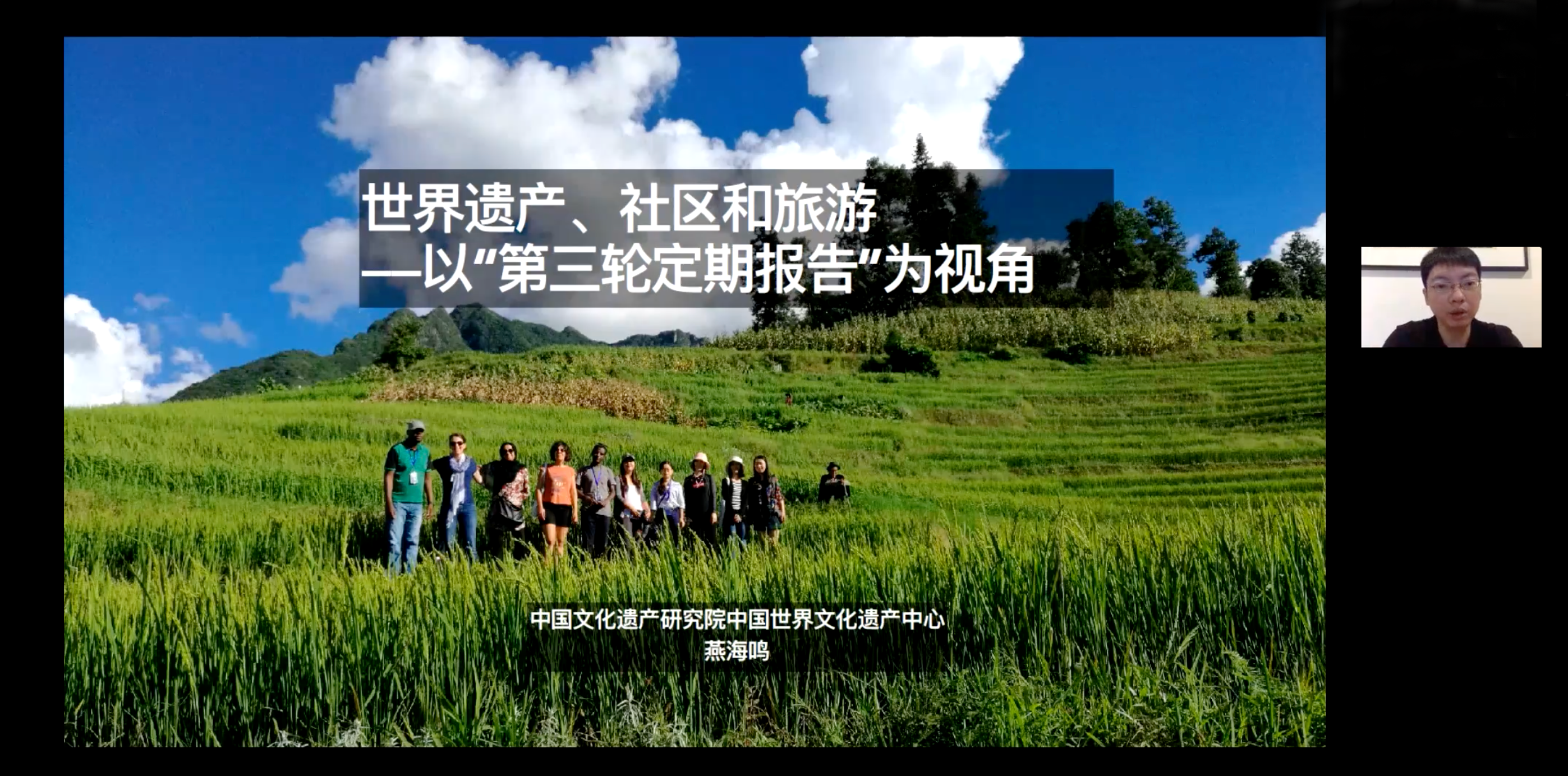
Mr. Yan Haiming illustrated "World Heritage and Community Collaboration" ©️Wang Lan/ WHITRAP 2021
Ms. Yang Xiaoru, the former director of Monitoring and Management Center of Hangzhou West Lake World Cultural Heritage, shared the experience of coordinated development of the "Jingzhong Village" in West Lake. Through the interpretation of the entire West Lake landscape, she identified important landscape components and demonstrated the integrated characteristics of the community. She introduced the territorial scale and industrial development of "Jingzhong Village". In response to the environmental problems, she provided the solutions such as removing illegal structures to reveal landscape, renovating building facades, and optimizing infrastructures, improving ecological and living conditions of village, protecting and exploring scattered historical monuments, etc. She also shared practical experience about communicating with the residents and optimizing the management mechanism methods and approaches, include building the incentive mechnisms for residents to improve the environment spontaneously, staging environmental remediation, exploring the village characteristics according to local conditions, understanding the needs of residents timely and guiding their sense of self-worth, coordinating the development of each village to maintain a stable interest pattern, etc.
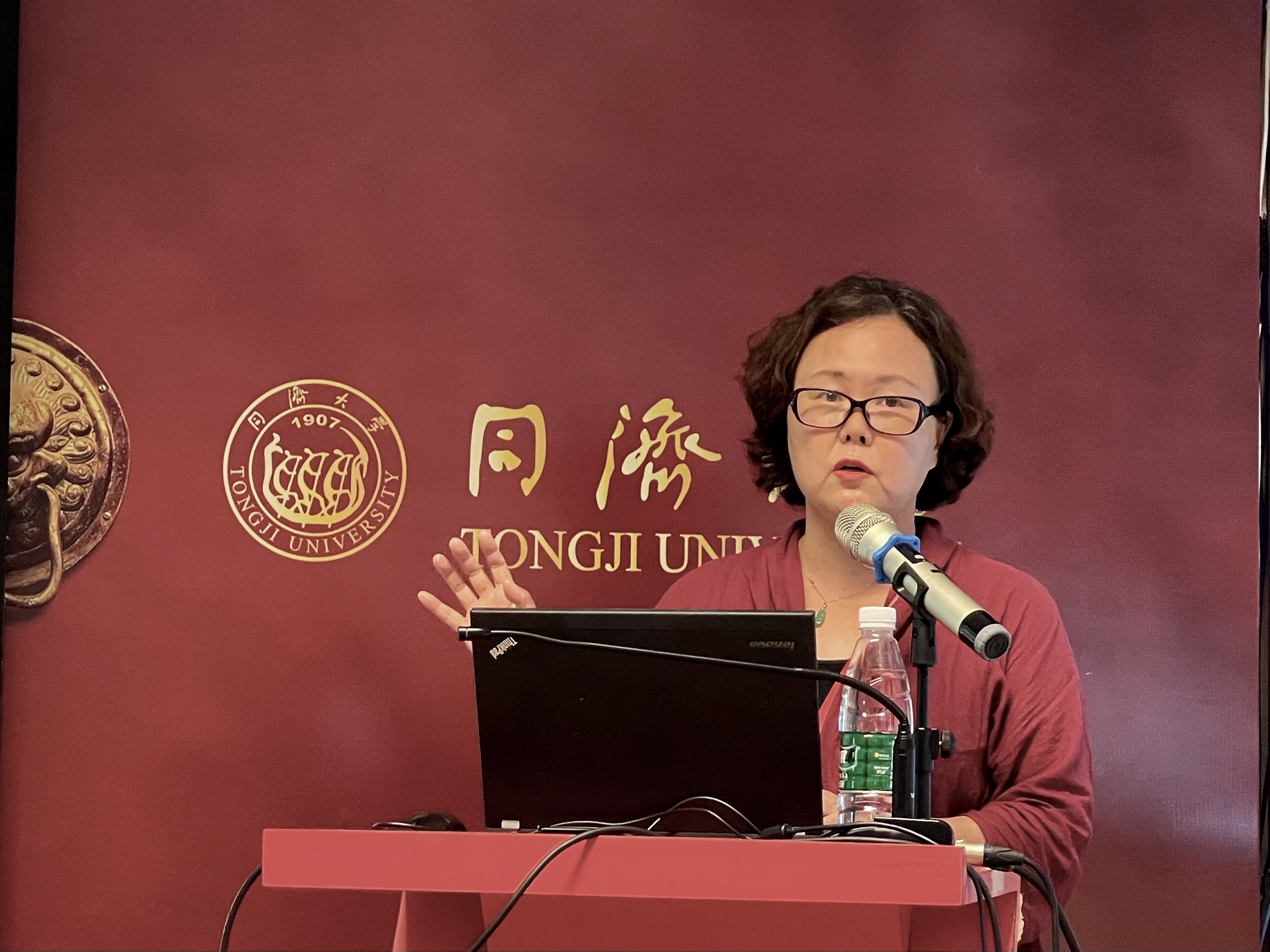
Ms. Yang Xiaoru introduced "Case study: the West Lake urban village project" ©️Wang Lan/ WHITRAP 2021
Group work
This training course set up group discussions according to 4 modules which aimed to help trainees deepen their understanding of the course and exchange practical experience. The 30 trainees were divided into 6 groups, taking Yancheng Wetland, Lijiang Ancient City, Hangzhou Liangzhu, Taishan Mountain, Lushan Mountain and Jiuzhaigou as examples, considered about the world heritage OUVs recognition and its planning as well as management, tourism products, and community collaboration. The topics were discussed and rich research results were formed during the process.
(1) In terms of heritage value recognition, trainees generally agreed that stakeholders including heritage site managers, tourists, local residents were lack of the awareness of OUVs, the official interpretations t of the heritage site was not clear and accurate, which made it impossible to effectively disseminate OUVs, and the tourism were excessively commercial and inconsiderate of the heritage community, leading to incomplete understanding of the heritage site’s value system. Therefore, the trainees proposed many solutions, for example, strengthening the capacity building and professional competence related to the interests of all parties, clarifying the publicity of OUVs as the core, introducing digital technology to enrich the interpretation forms and tourist experience, improving the quality of tourism services, inspiring the learning passions of tourists, and increasing the community’s sense of cultural identity and their management strengths.
(2) In terms of heritage protection and management, the trainees generally considered that there was a conflicting functions among the heritage site management departments which led to ineffective operations, and excessive commercialization also has adverse impacts on the heritage site. There were also informal tourism and management behaviors and lack of professionals and funds investment, which caused serious out flow of community populations, unclear land ownership, and overlapping of planning and authority between heritage sites and with other systems. Therefore, the trainees proposed the solutions, for example, strengthening the guidance for the heritage site businesses by formulating an official "protection management plan", developing high-quality tourism products based on OUVs and heritage site community culture, establishing a shared information data platform, clarifying heritage site management authority with the scope of responsibility, and conducting multi-party coordination meetings, etc.
(3) In terms of tourism products, the trainees generally thought that the existing tourism markets in heritage sites prevail relatively low-end and homogenous products, which cannot represent the heritage values and pursue short-term instead of systematic and sustainable profits. The trainees also proposed standardized production guidance based on the characteristics of each heritage site, such as setting IP image and product entry thresholds, playing the active role of new media to attract attentions to the heritage site, developing diverse products to meet different tourists’ needs, strengthening the capacity building of residents, so that they can participate in tourism interpretation and experience in the ethnic settlements.
(4) In terms of community collaboration, the trainees concluded that the main demands of the residents in heritage site community, including increasing economic income, improving the quality of life, more room for development and government support and industry guidance, enhancing infrastructure and public service networks, etc. Besides, residents also had the problems of lacking OUV awareness and low sense of local identity and autonomy. Therefore, trainees believed that government management department should strengthen the “top-down” guiding role through scientifically arrangement of the layout and functions of the community, adopting the “incentive mechanism” to enhance the residents’ willingness to autonomy, guiding the residents to participate in the decision-making process of local affairs, enhancing their sense of belonging and identity. Trainees also proposed the establishment of an effective “bottom-up” dialogue mechanism with resident committees in order to respond to residents’ demands and coordinate development willingness.
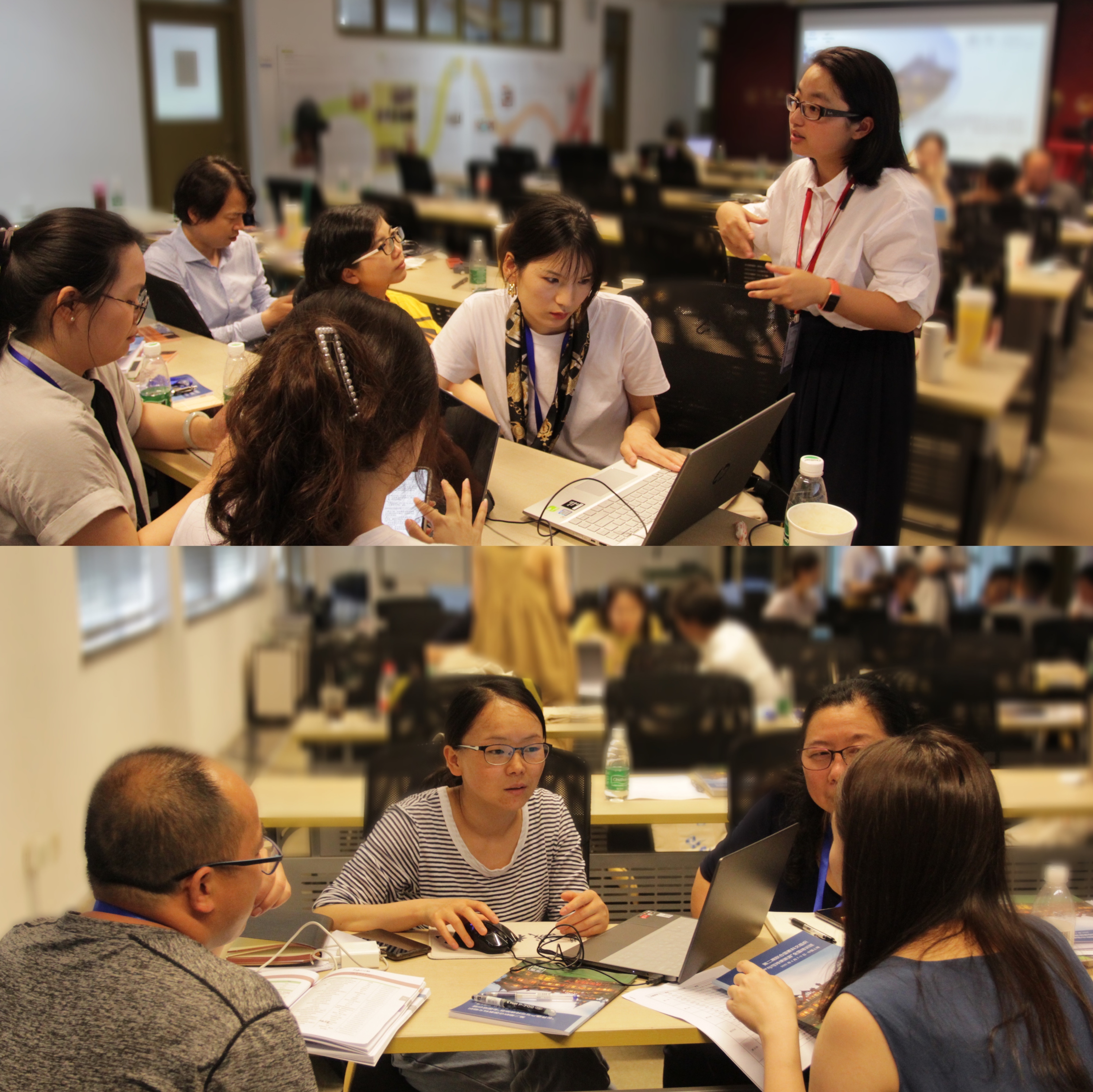
Group assignment discussion ©️Wang LAN/WHITRAP 2021
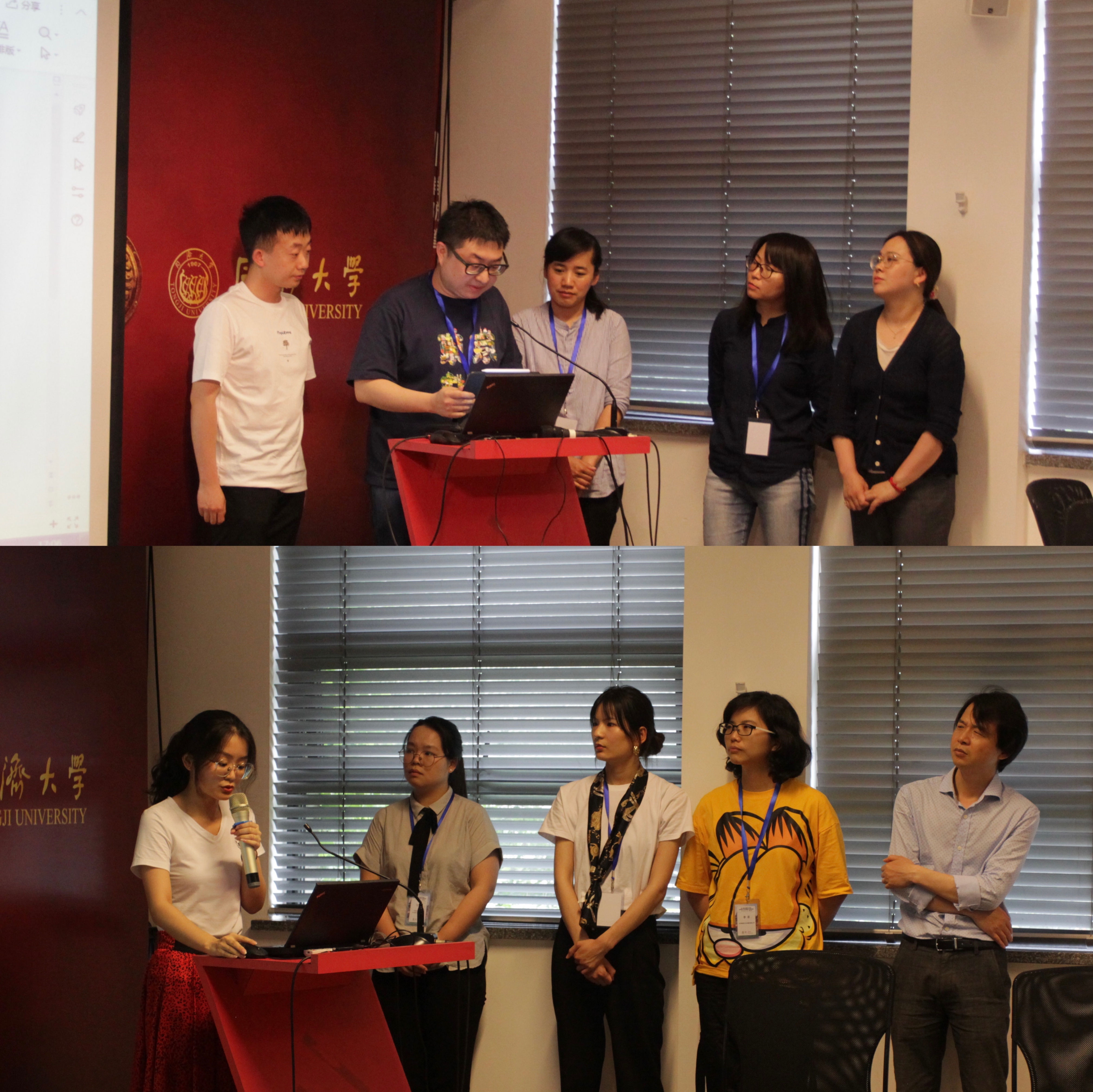
Presentation ©️Wang LAN/WHITRAP 2021
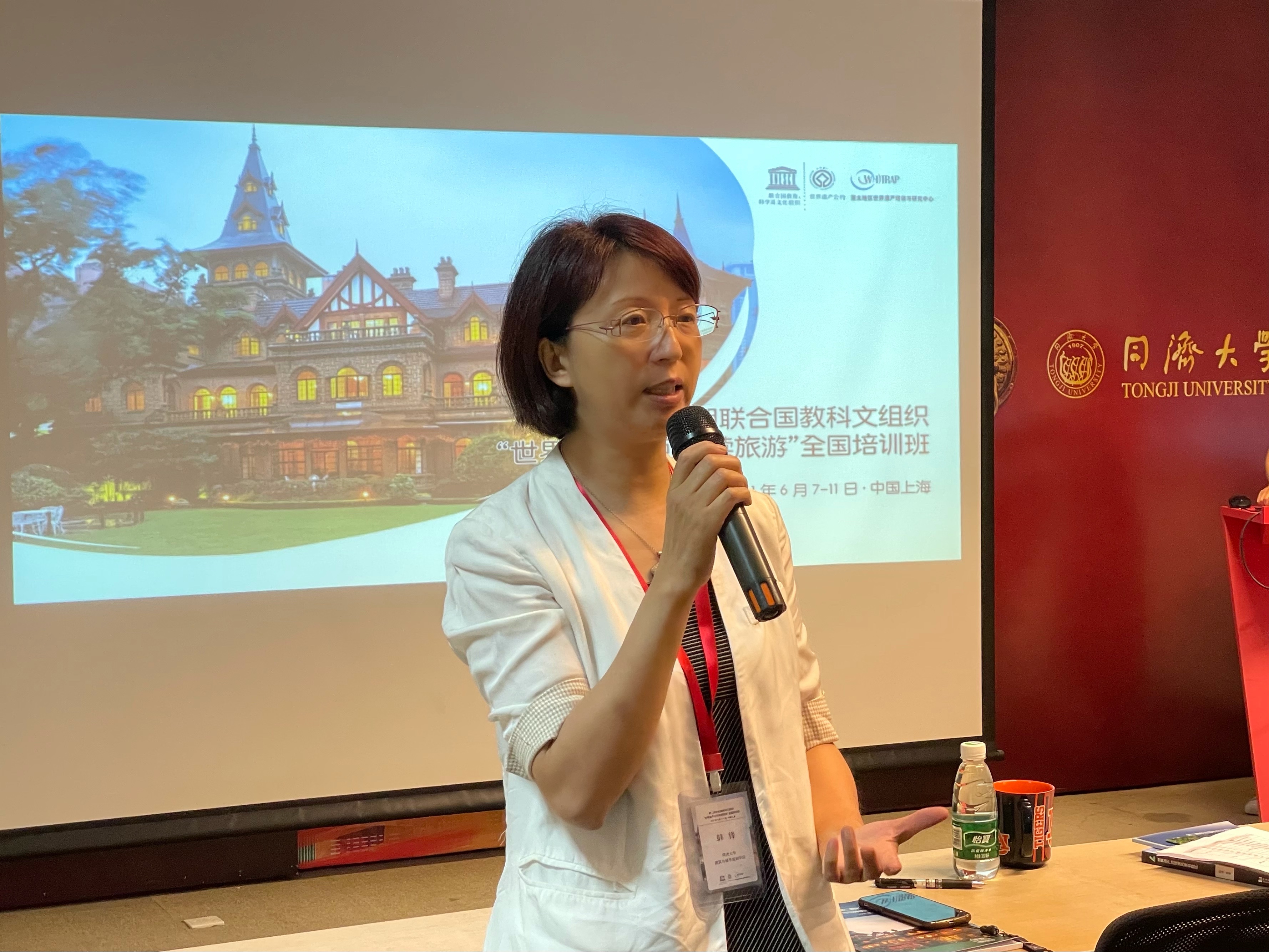
Ms. Han Feng gave comments to the presentation ©️ Wang LAN/WHITRAP 2021
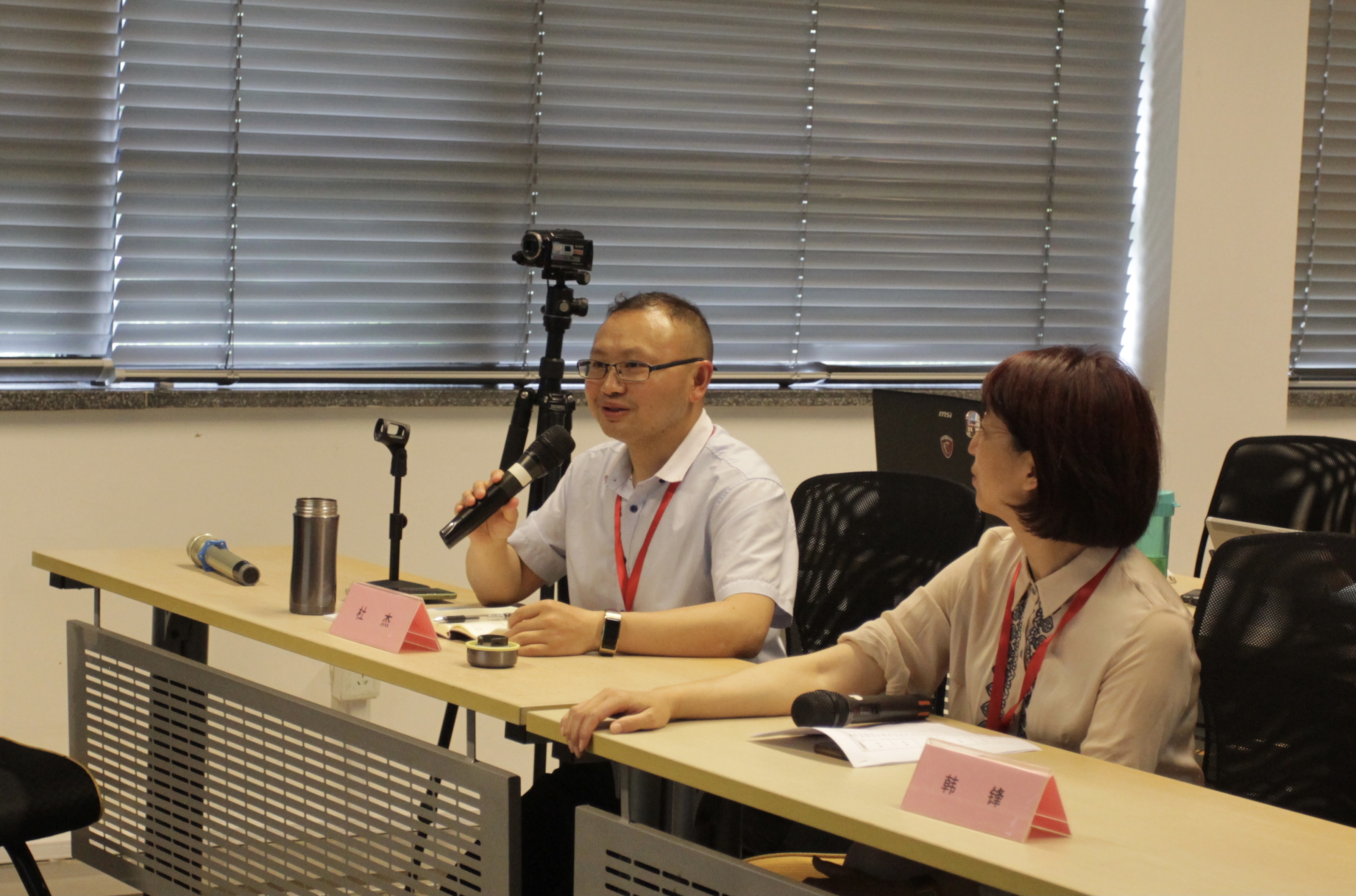
Mr. Du Jie gave comments to the presentation ©️ Wang LAN/WHITRAP 2021
Curriculum evaluation and analysis
To improve the quality of WHITRAP further training course, participants completed the course evaluation form at the end of the World Heritage and Sustainable Tourism (WH+ST) training course. A total of 31 questionnaires were received, of which 29 were valid. The questionnaire evaluates the quality and effectiveness of training courses from two parts: 1. quantitative: course organization, course design, teaching content, and 2. qualitative: suggestions. The final results illustrated that 100% of participants were satisfied with the course organization and 98.45% were satisfied with the course design. Detailed analysis is as following.
1. Course organization
Participants highly appraised the course organization and generally satisfied with the course facilities and logistics. According to the evaluation results, 79.31% of members were delighted with the course organization, and 20.69% are satisfied with it. Some trainees suggested that the further field trip is better to be arranged on the last day of the training which is more conducive to integrate the theoretical understanding with the practical case analysis. The specific statistical data of course organization is presented by chart1.
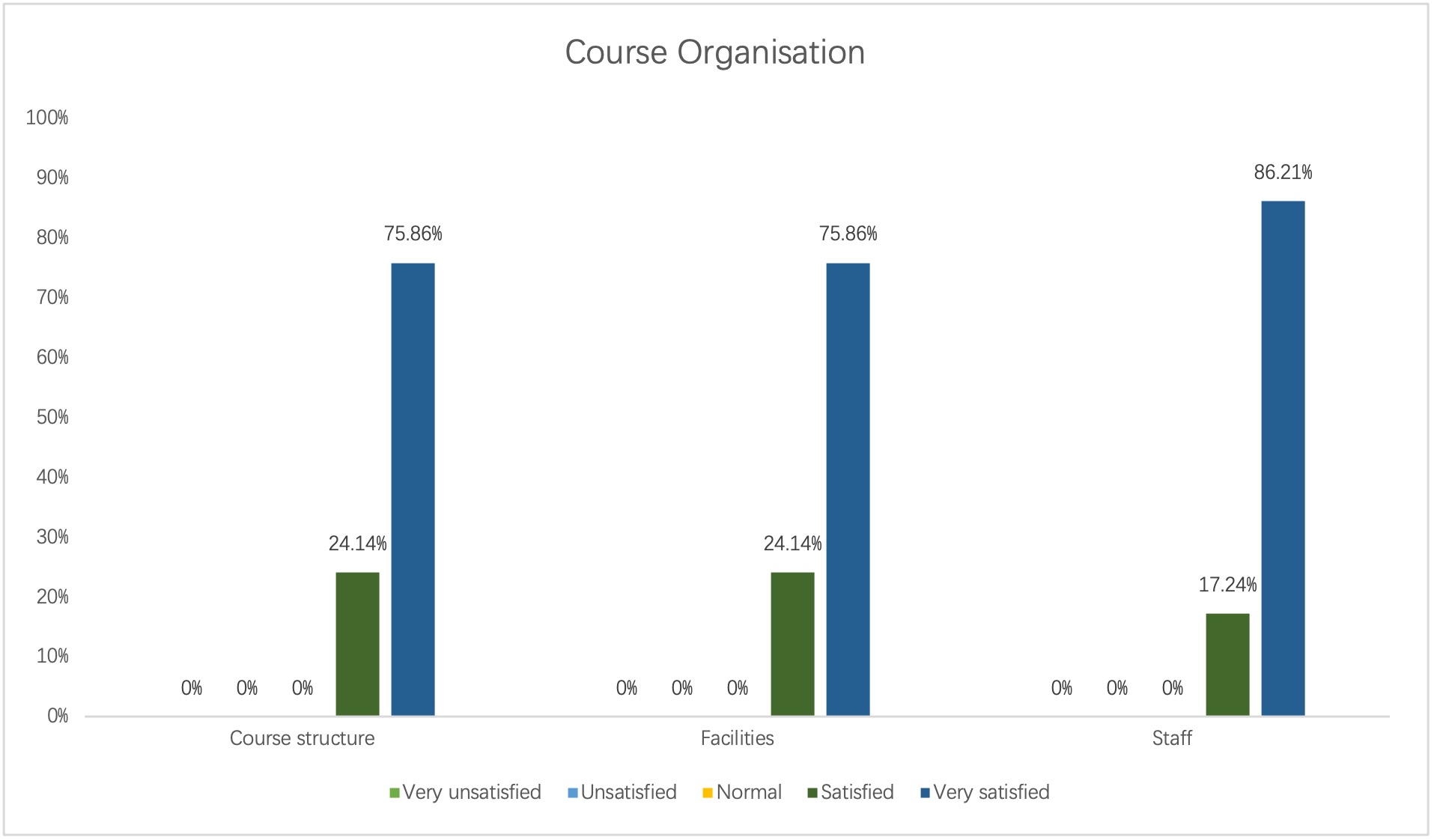
Chart 1
2. Course design
Most of participants were positively satisfied with the course design; 98.45% of the participants rated "satisfied" or above. In terms of the course quality, they considered that the tutors were splendid; the teaching methods were novel; and the course contents were clean and clear. What mentioned above can be well applied to the future actions of heritage site protection and sustainable development. In addition, the training materials have also been praised by the trainees.
To promote participants' understanding and appreciation of the course content, they discuss the topics of the day in groups after the end of each day's course and report the discussion results. As a result, 97.73% of the trainees agree with the group work outcomes that can be integrated with their actual work. However, as the randomly assigned panellists came from different heritage sites, they did not know each other, which had a negative impact on the effectiveness of the group discussions at the initial stage of group project. The specific data of course design is illustrated in chart 2.
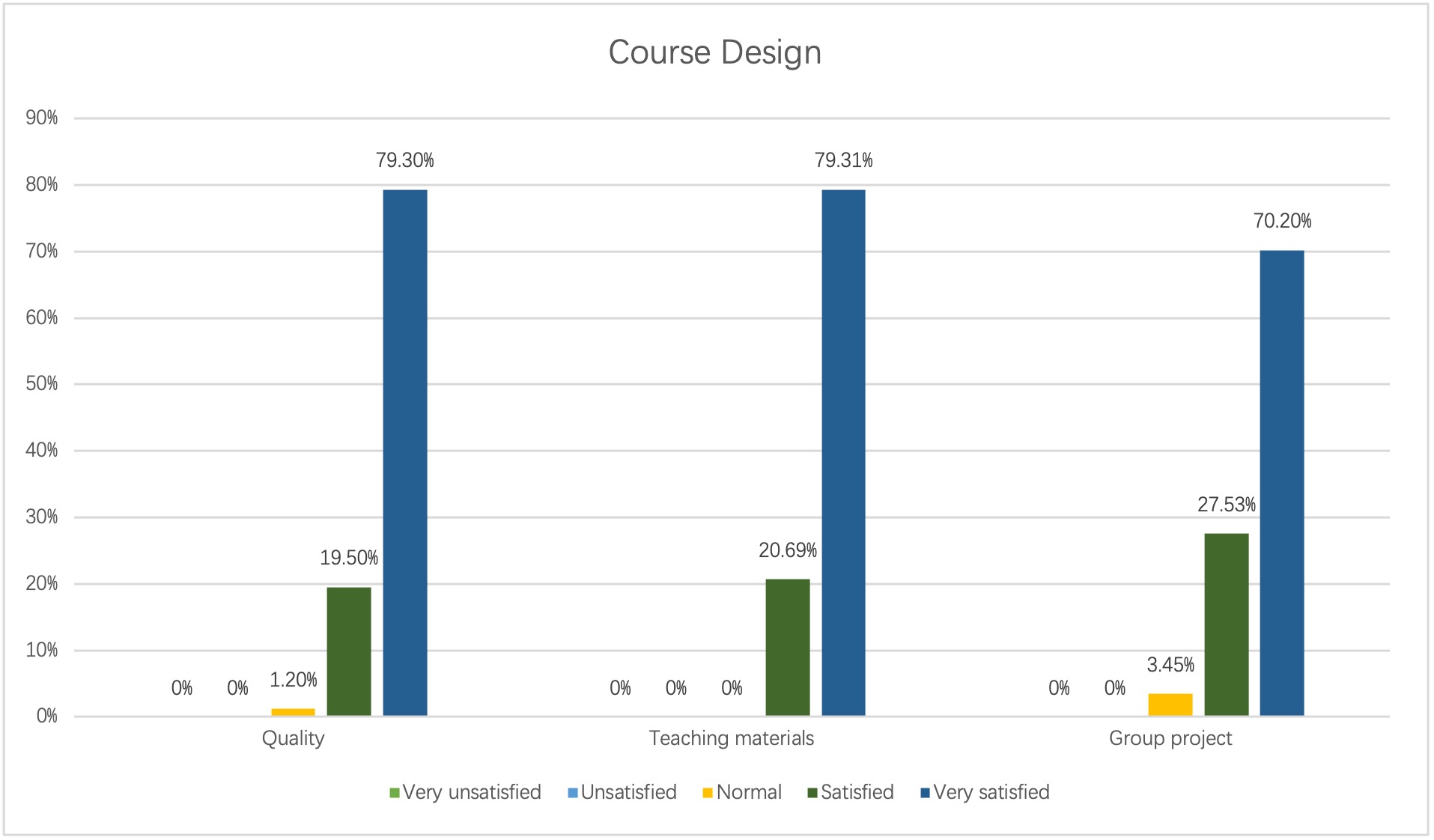
Chart 2
3. Teaching content
This section evaluates the teaching content of each instructor. According to the evaluation results, the highest score are "World Heritage Value Cognition and Protection" and "World Heritage Protection and Management Planning, " presented by Prof. Han Feng. Ranking on the second place are "Heritage Impact Monitoring and Management" by Prof. Zhang Chaozhi; "World Heritage and Sustainable Tourism: The Transformation Effect of Digital Technology, Famous Historical and Cultural Street in China - North Shaanxi Road by Ms. Wu Fei; "World Heritage and Community Sustainability - from the perspective of the Third Round of World Heritage Report" by Mr. Yan Haiming; and "Exploration and Practice of Coordinated Development of 'Jingzhong Village' in West Lake" by Ms. Yang Xiaoru. In addition, Prof. Xiao Qianhui's "World Heritage Tourism Marketing Strategy"; Director Du Jie's "Jiuzhaigou World Natural Heritage Conservation Management Practice" and Dr. Ju Xi's "Yangpu Riverside" also achieved the unanimous appreciation of the trainees, are ranked the third.
4. Comments and Suggestions
Trainees commented that the courses closely combine theory and practice, contained professional teachers with a wide range of topics, and directly guided the protection and management of heritage sites in sustainable tourism. For future perspectives, participants expressed to absorb more frontier information on "World Heritage Management Planning", "Heritage Assessment", "Urban Renewal", and "World Heritage Public Popularisation."


